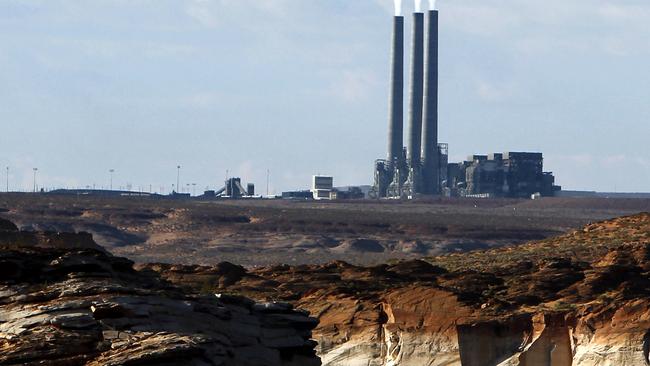Tory Shepherd: As war rages over energy options such as coal or renewables, future power will likely come from range of alternatives
WE’RE on a path that splits off in several directions regarding our electricity system but – unless we get wildly lost – will end up in the same place, writes Tory Shepherd.

Opinion
Don't miss out on the headlines from Opinion. Followed categories will be added to My News.
- Blame game over rolling blackouts in South Australia
- Chinese firm planning $350 million gas-fired power station
- Poll finds we blame ETSA sale for high SA power prices
- Pumped hydro project gets government backing
THIS may sound like fake news, but bear with me.
Everyone is in furious agreement about what needs to happen with our electricity system. Well, everyone who matters.
The major parties, the Greens. Industry. Environmentalists. The sensible ones on the crossbench(!). The guy from Bar Torino who gave me some churros.
1. We have to keep the lights on.
2. Electricity is too bloody expensive.
3. We have to get our emissions down (actually, I didn’t ask Bar Torino guy about this one).
The howling fury from Canberra and irate internet commenters may make it sound as though Australia is at the crossroads. One sign pointing at coal, another at renewables.
We’re not at a crossroads. We’re on a path that splits off in several directions but – unless we get wildly lost – will end up in the same place.
The ‘lost’ scenario ends up with us in an arid wasteland, worshipping lumps of black coal and staring mournfully at the last surviving tree. Best not get lost.
Fortunately, hordes of extremely bright people have been working on mapping the way to The Future We Want.
Just a couple of months ago CSIRO – that’s the Government’s own scientists – released the Electricity Network Transformation Roadmap. Together with Energy Networks Australia, they spent two years coming up with a “comprehensive plan to keep the lights on, bills affordable and decarbonise electricity”.
And – this’ll put a spring in your step – they found we can do it all. Avoid blackouts, pay $414 a year less for power, and get our emissions down.
Under the plan the sector can hit zero net emissions by 2050, we can avoid $16 billion in infrastructure costs by hooking up solar and batteries instead of installing poles and wires, drive network charges down, saving money. (Renewables are not the main factor in high power prices; gas is increasingly pricey and building the “poles and wires” drives up costs).
The Roadmap has a bunch of scenarios based around people producing their own power from renewable and low-emission sources.
And of course we have Chief Scientist Dr Alan Finkel working on another crucial guide. His blueprint will take into account SA’s statewide blackout, and what needs to happen to the national energy market.
But they all depend on having stable federal policies. There’s the big roadblock.
The excellent news is there is some seriously exciting technology already here, and there’s more in the pipeline.
About 97 per cent of the world’s power storage is in pumped hydro. We’ve barely glanced at it here. But Prime Minister Malcolm Turnbull and Energy Minister Josh Frydenberg agree with Dr Finkel that it offers Australia an amazing opportunity. It could see SA go to 100 per cent renewables, stable and cheap power.
Household battery storage is improving at a rate of megawatts.
Mr Frydenberg points to Adelaide’s virtual power plant – the biggest one in the world. A thousand people can share and store power, bringing prices down and providing stable energy.
Solar thermal project proposals are promising.
We’re still going to need coal for a while, and there are ways it can be cleaned up a bit. We’ve got heaps of gas – enough to power the whole continent for decades – if we can start getting more of it out of the ground.
People are working on microgrids and supergrids to ferry electrons around.
One day, a mature Australia might even seriously consider the next generation nuclear power plants.
We will find a mix of technology that works.
In the theatre of Parliament this week, South Australia and its renewable energy were in the spotlight. Every second question in Question Time was about energy, and every answer was about SA being a failed experiment, and the “canary in the coal mine”, a dire warning for the rest of the country.
There was enough bluster to keep the wind turbines powering the state for years.
SA is obviously stumbling.
But we’re not lost, we’ve just gone beyond our comfort zone. We’re breaking new ground – somebody has to – and if the politics doesn’t get in our way, science will see us through.


